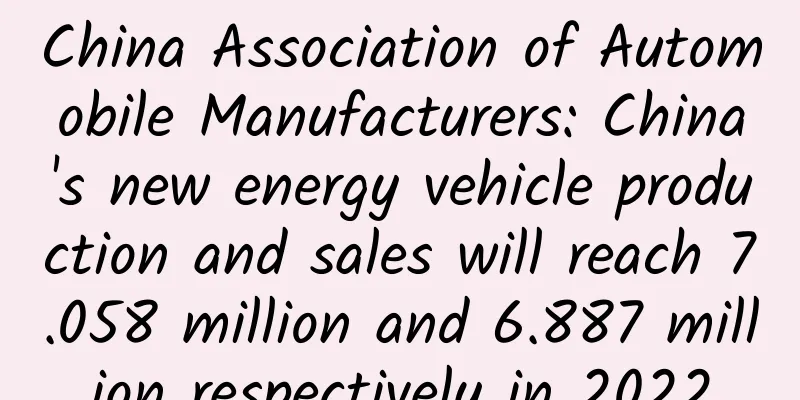Huang Zhang returns to Meizu: Catching up with Lei Jun and pursuing him relentlessly

|
Xiaomi, which was only founded in 2010, has now grown into a company with a market value of nearly US$23 billion, while Meizu, which started earlier, is far behind. In the eyes of industry insiders, Meizu and Xiaomi are two companies with completely different genes. September 2nd was a day of great significance for Meizu Technology. On that day, Meizu held a press conference for its new product MX4 at the Beijing National Stadium. This was the first new product press conference after Huang Zhang returned to Meizu, which meant that Meizu had begun to fight back, with its opponent targeting Xiaomi. In fact, on July 22, Xiaomi just released its new generation product Mi 4 at its new product launch conference, which was enthusiastically welcomed by many Mi fans. However, the emergence of Meizu MX4 has posed a new threat to it. Meizu, which has always been pursuing the mid-to-high-end route, has begun to lower its profile and move closer to mid-to-low-end users. The price of 1,799 yuan seems to indicate that a price war is about to begin. Huang Zhang has previously publicly stated: "MX4 does not intend to sell at a profit. We are now using financing to expand our scale, using scale to develop Internet services, and using Internet services to push up the company's stock so that shareholders and employees can get rewards." However, it remains to be seen whether Meizu can make up for the golden three years it lost in the past through this price war. Meizu spends a lot of money on marketing to catch up with Xiaomi The MX4 released this time has many highlights, but the price that really caused a sensation is 1799 yuan. In the eyes of industry insiders, the MX4 surpasses several products previously launched by Meizu and has a high cost performance. In fact, the quality and craftsmanship of Meizu mobile phones are well-known in the industry, with Huang Zhang's personal characteristics: professional and low-key. Meizu focuses on products, but is half a beat slower in the market. In recent years, Meizu's voice in the market has become weaker and weaker. Huang Zhang returned to Meizu at the beginning of this year and was determined to carry out a reform. Meizu Vice President Li Nan once told the media that Huang Zhang brought three major changes: external financing, changing the previous form of development mainly based on its own profits; introducing employee stock ownership plans, changing from a family business to a popular company; and changing from pursuing small and beautiful to prioritizing scale. For this reform, Meizu set itself a five-year deadline and planned to go public within five years. Industry insiders believe that, for now, Meizu has only surpassed itself and is still some distance away from Xiaomi. Although Meizu has its own loyal fans, the user scale of the two is not on the same order of magnitude. Secondly, the two are far apart in market share. According to the domestic mobile phone market share statistics recently released by CCTV, Xiaomi ranks second after Samsung, and Meizu is not among the top seven. Lai Xiaoling, investment manager of Sinovation Ventures, told the reporter: "When Xiaomi seized the opportunity of Android, Meizu did not make such a decisive move to research and development. In addition, Huang Zhang is a person who pursues product quality and product tone. He may be more interested in creating better products and did not pay too much attention to the market, so he lost the opportunity for development." Huang Zhang's high-profile return this time has brought expectations to the market. However, a person from a venture capital institution in South China questioned Meizu's intention to seize the market through price wars. "When the smartphone replacement trend was high, Xiaomi disrupted the market structure with more cost-effective prices. But when the market structure gradually settled, Meizu began to lower prices, but the effect was not as good as it was then." In fact, Xiaomi, which was only founded in 2010, has now grown into a company with a market value of nearly 23 billion US dollars, while Meizu, which started earlier, is far behind. In the eyes of industry insiders, Meizu and Xiaomi are two companies with completely different genes. "Xiaomi is considered an Internet company, while Meizu is more of a company that makes high-quality mobile phones. In terms of positioning, Xiaomi knows how to integrate resources and play with the Internet better." Since the beginning of this year, Meizu has also tried to make a difference. First, in terms of product breadth, Meizu will release four new products this year, unprecedentedly, to meet the needs of different users. This has changed the previous image of Meizu's narrow brand coverage, mainly focusing on mid-range income users. Secondly, Meizu has begun to understand the value of openness in the Internet era. The newly launched flyme4.0 system will be open to other brands, and more profits will be obtained through software value-added services. In addition, Meizu announced the Connect to Meizu strategy, trying to create a smart hardware ecosystem. Of course, the most noteworthy thing is the marketing strategy of Meizu, which has been criticized by the outside world. Now Meizu pays more attention to this. Li Nan, the current vice president in charge of Meizu's marketing, said in his Weibo that the day after the press conference, Meizu's building interactive advertisements had been rolled out in many cities across the country. In addition, the popularity of Meizu and MX4's Baidu index soared to 1.64 million on the day of the press conference. Li Nan loudly declared in his Weibo: "The only suspense now is whether the Baidu index can rise another 20 to 30 percent to beat Xiaomi." It is understood that in terms of online marketing, Meizu President Bai Yongxiang announced that the investment in marketing will be 10 times more than before. For this new product launch, Meizu also put a lot of advertisements on the official Weibo, forums, and APP with more than 100 million users and launched fan interaction activities. Previously, Meizu's promotion was generally concentrated on forums. However, the effectiveness of Meizu's marketing promotion still depends on the sales of MX4. According to statistics from the company's staff, as of September 4, the online and offline reservations and pre-orders for MX4 have exceeded 3 million units. Franchise agency system, limited expansion scale It is understood that Meizu announced at the press conference that it will open 1,000 stores across the country this year, and has cooperated with Suning to open 300 authorized stores, as well as 3,000 counters in major shopping malls across the country. The expansion of offline stores will be a new move by Meizu to expand its sales channels. It is reported that Meizu expects the online and offline sales channels to have a ratio of 3:7 respectively. Currently, Meizu has cooperated with JD.com and Tmall online. A Meizu staff member told the reporter: "Meizu mainly adopts the operation mode of provincial sales branch + platform company. The provincial platform company is jointly established by agents and local traditional provincial packagers to jointly expand the market." However, this distribution model has both advantages and disadvantages. According to the above-mentioned mobile phone dealer, "Since Meizu has always adopted the form of offline franchise chains, most specialty stores only sell Meizu, which can effectively control products and prices, but is not conducive to large-scale expansion. Other brand manufacturers, such as BBK mobile phones, adopt a distribution model and can represent multiple brands. Compared with specialty stores, this form is conducive to channel scale expansion, and on the other hand, the store rental cost is relatively low." The above-mentioned person further told the reporter that in fact, Xiaomi should be the best in offline distribution channels. He explained: "Nearly 70% of Xiaomi's sales revenue comes from offline, while very little comes from online. Xiaomi cooperates with the distributor Aishide. Xiaomi is mainly responsible for product and topic hype, while the distributor is responsible for offline sales and other work. When Xiaomi launches a new product, it first hypes it up through online topics, and then uses hunger marketing to get consumers to buy it. However, in many cases, only a few people can grab it online, and more people will buy it through the secondary market. Because there is a lot of topic in the early stage, the channel dealers will often increase the price. Xiaomi's model benefits all three parties, of course, the premise is to ignite the topic." It is understood that the average offline transaction price of Redmi is 1,099 yuan. Although the profit is low, this type of product is hard currency and circulates quickly in the offline secondary market, which brings considerable profits to distributors. If Meizu wants to fight against the fierce distribution channels of Xiaomi with the scale of 1,000 stores, more changes are needed. As a winner of Toutiao's Qingyun Plan and Baijiahao's Bai+ Plan, the 2019 Baidu Digital Author of the Year, the Baijiahao's Most Popular Author in the Technology Field, the 2019 Sogou Technology and Culture Author, and the 2021 Baijiahao Quarterly Influential Creator, he has won many awards, including the 2013 Sohu Best Industry Media Person, the 2015 China New Media Entrepreneurship Competition Beijing Third Place, the 2015 Guangmang Experience Award, the 2015 China New Media Entrepreneurship Competition Finals Third Place, and the 2018 Baidu Dynamic Annual Powerful Celebrity. |
<<: When the projector becomes a "ball": Haier iSee mini user experience
>>: I don't want to use a watered-down iPhone 6.
Recommend
Thrilling! The man's action caused a sudden loud noise in the car, just because he put these
Before we knew it, it was already June. The tempe...
One article tells the past and present of the "short video trend"
On April 22, Papi Jiang, who became famous throug...
Good looks are still useful! Embryo beauty contest: Embryo appearance and selection
Author: Fu Jing, Chief Physician of Shanghai Jiai...
Musk confirmed that Tesla has recently stopped production, but also said that Model S/X will soon be produced in two shifts
Earlier, foreign media reported that Tesla had su...
International Polar Bear Day | Polar bears are not white? More strange knowledge
February 27th of each year is "International...
The dispute between "hard tofu" and "soft tofu" is because of this addition!
Audit expert: Wang Guoyi Postdoctoral fellow in N...
If glue is so sticky, why doesn't it stick itself to the bottle?
Audit expert: Luo Huiqian Researcher at the Insti...
Apple and Samsung fined heavily for deliberately slowing down their phones
[[247642]] Do you have this feeling that every ti...
It’s been two years since Tianwen landed on Mars. Let’s see whose hometown has landed on Mars?
May 15th marks the second anniversary of Tianwen-...
Useful Information Collection | How to Scientifically Distinguish Giant Pandas? (Except "Huahua")
Eat, sleep, climb trees, roll around Just a few s...
Why is ripping off tape so noisy? Because it's about the same as a rocket launch
When we think of supersonic shock waves, we may s...
When you are ready to "strike", what should you do if "bald" suddenly attacks?
Because of the unknown, there is fear. Correct un...
Android 12 detail adjustments: notification system count is more prominent
Every major version of Android will optimize the ...
688 metacercariae were found on a water chestnut. How can we eat water chestnuts, water caltrops and wild rice stems safely?
Summer is the season when aquatic vegetables such...









